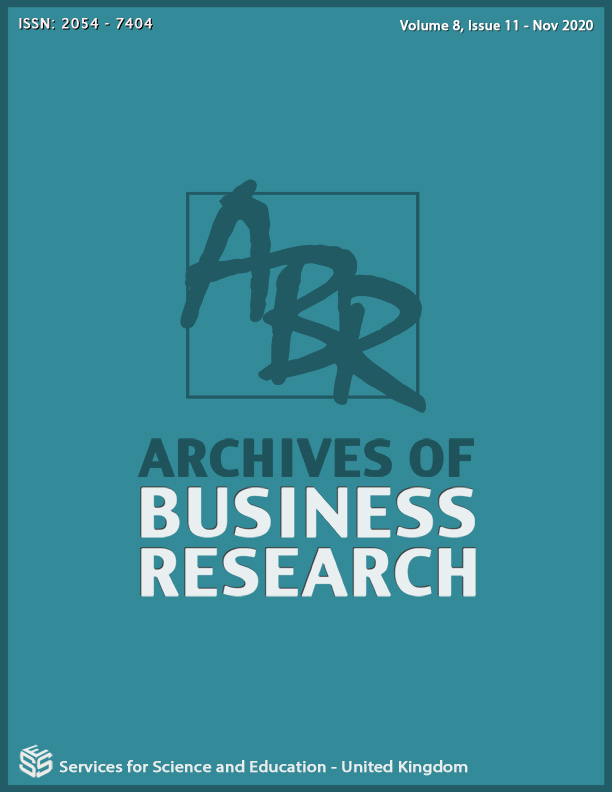A STUDY TO EXPLORE SOCIO-ECONOMIC FACTORS IN THE DEVELOPMENT OF LOCAL COMMUNITIES
DOI:
https://doi.org/10.14738/abr.811.9208Keywords:
Socio-economy, Rural Development, Urbanisation, Empowering, Interventions, Knowledge Management, ViabilityAbstract
Economic growth in rural areas faces several challenges when comparing to urban regions. Limited employment opportunities and smaller profit from rural specific economic activities such as agriculture caused lower incomes to the local community. It is also very often that Agri-food products is undervaluation and not able to reach out outside market. This economic gaps between regions has resulted in several cases of outward migration flows of rural populations and land abandonment, which possibly brings major risk to the future of rural growth and sustainability. As reinforced by the needs to address the gaps and demands of the local community, therefore, this study was carried out to investigate the socio-economic demands and challenges of the local population in Temerloh, Pahang to recommend relevant assistance and interventions required. Findings from this study will provide important inputs that will suffice relevant literatures for the stakeholders to plan for a better socio-economic development in Malaysia. In general, the overall results of this study reveal the gaps faced by the community in the District of Temerloh in the context of social and economy. This study was carried out via a structured survey throughout the district involving 300 respondents and also complemented with a face-to-face interview carried out with key stakeholders.
References
(5th Ed). Ft.Worth: Holt, Rinehart and Winston, Inc. Belmont CA: Wadsworth.
Bartlett, J. E., Kotrlik, J. W., & Higgins, C. (2001). Organizational research: Determining appropriate sample size for survey research. Information Technology, Learning, and Performance Journal, 19(1), 43-50.
Berk, L. E. (1994). Child Development, Boston: Allyn and Bacon Publishing.
Chirico S., Findlay J., Haywood N., McCutcheon G., Rai R., Scott M. & Wells M.(1998). Sustainable Community Development Guidelines. Bedfordshire Health Authority.
Cohen, J. (1988). Statistical power analysis for the behavioral sciences (2nd Ed.).
Hillsdale, NJ: Lawrence Earlbaum.
Creswell J. W. & Plano Clerk V. L. (2011). Designing and Conducting Mixed Methods Research. Sage Publications.
Dua, S., Sahni S., & Goyal D. P. (2011). Information Intelligence, Systems, Technology and Management. 5th International Conference ICISTM Conference Proceedings.
Fitzgerald, L. F., Gelfrand, M. J., & Drasgow, F. (1995). Measuring sexual
harassment: Theoretical and psyometric advances. Basic and Applied Social Psychology, 17 (4), 425-445.
Kenny & El (2016). The Socio Economy Gap Analysis of Local Communities in the District Bentong. International Journal of Academic Research in Economics and Management Research, 5 (3)
Krejcie, R. V., & Morgan, D. W. (1970). Determining sample size for research activities. Educational and Psychological Measurement, (30), 607-610.
Mazzeo, S. E., Bergman M. E., Buchanan N. T., Drasgow F., & Fitzgerald L.F. (2001). Situation-Specific Assessment of Sexual Harassment.Journal of Vocational Behavior, 59(1), 120-131
Ministry of Culture, Arts and Tourism.(2011). Homestay Statistics 2011.
Morgan, D. L., & Kreuger, R. A. (1993) ‘When to use focus groups and why’ in Morgan D.L. (Eds.) Successful Focus Groups. London: Sage.
Mulligan, J. (2013). “Hotspot Watersheds—Identifying Opportunity” in Natural Infrastructure: Investing in Forested Landscapes for Source Water Protection. T. Gartner, J. Mulligan, R. Schmidt, and J. Gunn, eds. World Resources Institute.
Peterson, M. (2004). Homestay in Malaysia.Transition Abroad Magazine. Nov/Dec,28(3)56-57.
Pittenger, D. (2003). Behavioral Research: Design and Analysis. McGraw-Hill Higher Education.
Rea, L.M., & Parker, R.A. (1992). Designing and Conducting Survey Research: A Comprehensive Guide. San Francisco: Jossey-Bass Publishers.
Ryu, S., Ho, S. H., & Han, I. (2003). Knowledge sharing behavior of physicians in hospitals, Journal of Expert systems with application, Vol. 25, No.1, pp. 113-122.
Sabitha, M (1999). Persepsi Terhadap Gangguan Seksual di Tempat Kerja di kalangan
Pentadbir di Sektor Awam. Seminar Penyelidakan UUM ke 5, Pusat
Penyelidakan dan Perundangan, 28-30 September.
Sabitha, M. (2005) Kaedah Penyelidikan Sains Sosial. Petaling Jaya: Prentice Hall.
Sekaran, U. (2003). Research Methods for Business: A Skill Building Approach (4th Ed). Singapore: John Wiley & Sons, Inc.
Siddiquee, N. A. (2007). Public service innovations policy transfer and governance in the Asia-Pacific region: The. Malaysian experience, JOAAG, Vol. 2. No. 1.
Strong, B., DeVault, C., Sayad, B.W., & Cohen, R. F. (2010). The marriage and family experience (8th Ed). Belmont, CA: Wadsworth/Thompson Learning
Suppiah V., Sandhu M. S., (2011) "Organisational culture's influence on tacit knowledge‐sharing behaviour", Journal of Knowledge Management, Vol. 15 Iss: 3, pp.462 – 477.
Wiersma,W. (2000). Research Methods in Education: An Introduction. Boston: Allyn and Bacon.






